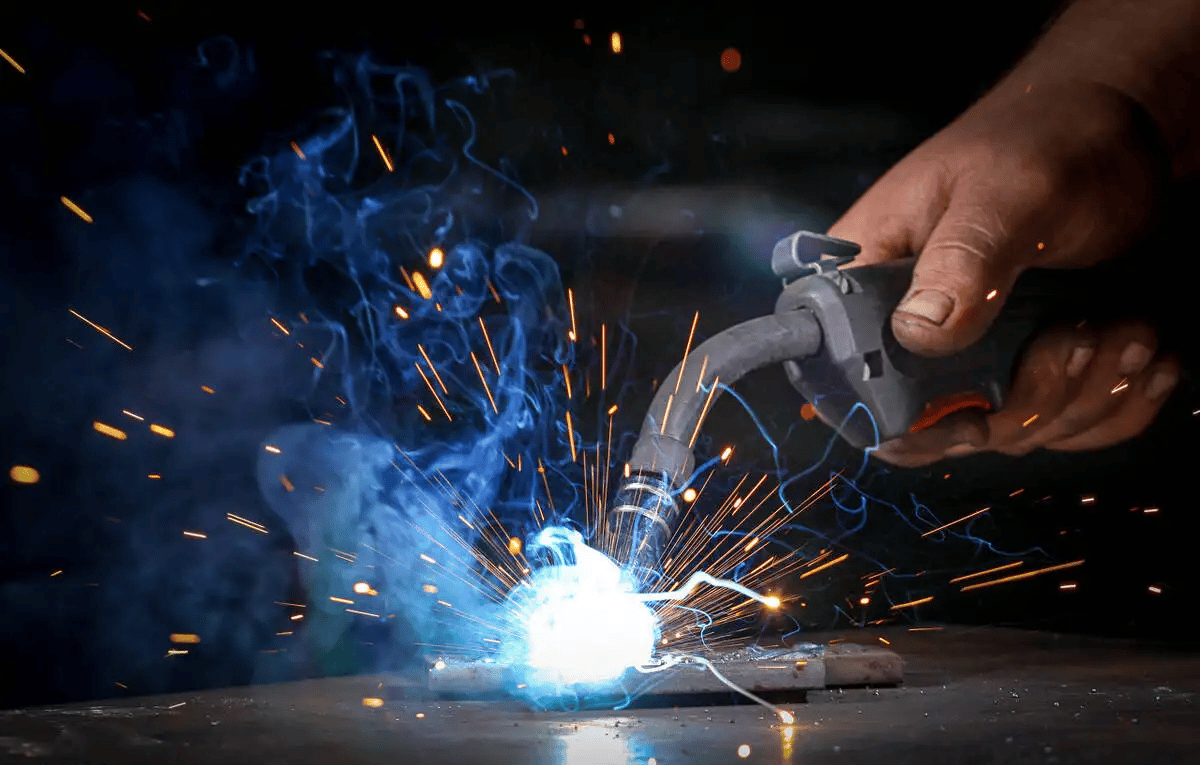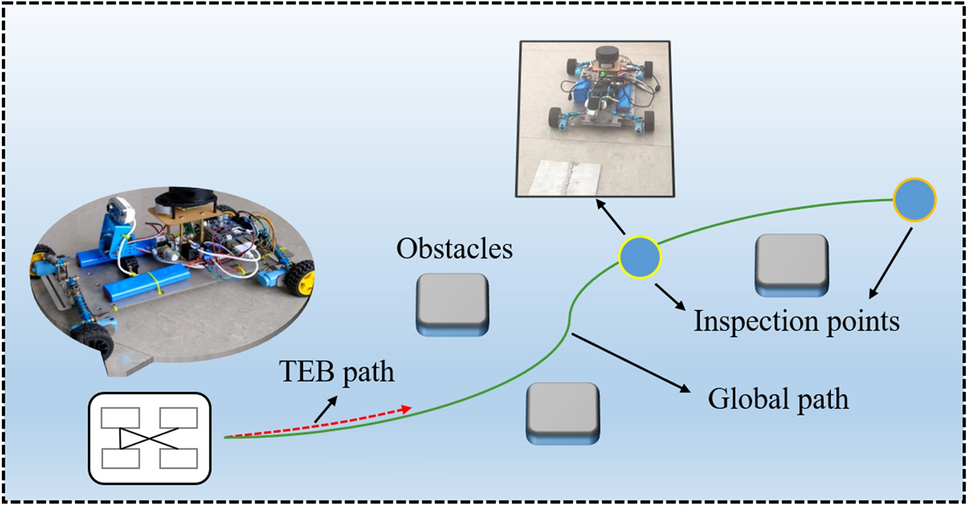The Ultimate Overview to Welding Inspection Racine for Industrial Standards
The Ultimate Overview to Welding Inspection Racine for Industrial Standards
Blog Article
Cutting-edge Strategies to Fillet Weld Evaluation and Testing: Enhancing Weld High Quality and Conformity Specifications
In the realm of welding, the quality and honesty of fillet welds play a crucial duty in making certain the structural soundness and integrity of different industrial components. With the continuous drive for improved performance and compliance with stringent requirements, the exploration of cutting-edge methods to fillet weld evaluation and screening has come to be critical.
Advanced Non-Destructive Testing Methods
Using state-of-the-art modern technologies, advanced non-destructive screening methods play a critical function in ensuring the stability and quality of fillet welds. These techniques, such as phased selection ultrasonic testing (PAUT) and magnetic fragment screening (MPT), offer in-depth insights into the weld's inner structure without creating any type of damages to the material. PAUT, as an example, utilizes several ultrasonic components to inspect the weld from different angles, providing an extensive visualization of possible problems like absence of fusion or fractures.
In A Similar Way, MPT is efficient in finding surface-breaking problems by using an electromagnetic field and iron particles to the weld area. This approach is particularly beneficial for recognizing suspensions that may endanger the weld's strength. By utilizing these innovative non-destructive testing techniques, weld examiners can properly assess the high quality of fillet welds, making sure conformity with market criteria and regulations. The ability to discover problems early on not only enhances weld quality however likewise stops pricey rework or failings in structural stability, underscoring the value of these cutting-edge screening strategies in welding examinations.
Robotics and Automation in Examination
The combination of robotics and automation has transformed the inspection procedure for fillet welds, boosting effectiveness and precision in quality evaluation. Robotics provide exact control and repeatability in checking welds, ensuring reliable and regular results. Automated systems can be set to comply with details assessment paths, making sure comprehensive coverage of welds and reducing the danger of human mistake.
Robotic examination systems geared up with innovative sensors can find and measure weld functions with high accuracy, providing in-depth information for analysis. These systems can determine issues such as cracks, lack of blend, and porosity, enabling timely rehabilitative activities to be taken. Additionally, robotics and automation enable for real-time information collection and analysis, offering instant responses to operators and helping with fast decision-making procedures.
Furthermore, using robotics and automation in fillet weld assessment boosts total productivity by decreasing assessment times and raising evaluation throughput. By enhancing the assessment procedure, manufacturers can ensure weld high quality and conformity requirements are fulfilled successfully, ultimately resulting in cost savings and improved product high quality.
Using Expert System for Evaluation
Man-made knowledge plays a crucial role in enhancing the effectiveness and accuracy of analysis in fillet weld evaluation processes. By taking advantage of the power of AI, examiners can enhance the evaluation of weld top quality and conformity criteria, causing a lot more reliable and precise outcomes. AI formulas can quickly process large amounts of information from weld assessments, identifying issues or incongruities that might be challenging to understand the nude eye. This innovative modern technology allows real-time tracking of weld quality, allowing for prompt restorative actions to be taken if any concerns are discovered.
Furthermore, AI systems can gain from past examination data, consistently improving their capability to recognize potential flaws and deviations in fillet welds. This adaptive understanding capability improves the total quality assurance procedure, reducing the probability of human mistake and making certain that welds meet the needed criteria. By incorporating expert system into fillet weld evaluation, sectors can achieve greater levels of efficiency, uniformity, and conformity in their examination practices.
Portable Devices for On-Site Evaluation
 Enhancing area inspection effectiveness, the fostering of mobile devices transforms on-site evaluation procedures for fillet welds. These devices supply flexibility and convenience, enabling examiners to carry out detailed examinations in various locations, including challenging or remote environments. Portable tools such as ultrasonic testing devices, magnetic particle evaluation equipment, and digital radiography systems offer real-time data and high-resolution imaging capabilities, enabling quick decision-making and immediate feedback on weld quality.
Enhancing area inspection effectiveness, the fostering of mobile devices transforms on-site evaluation procedures for fillet welds. These devices supply flexibility and convenience, enabling examiners to carry out detailed examinations in various locations, including challenging or remote environments. Portable tools such as ultrasonic testing devices, magnetic particle evaluation equipment, and digital radiography systems offer real-time data and high-resolution imaging capabilities, enabling quick decision-making and immediate feedback on weld quality.One substantial benefit of mobile devices is their capability to improve evaluation procedures, reducing downtime and boosting total performance. Examiners can quickly carry these tools to different work websites, removing the requirement for delivering heavy machinery or components to off-site centers. Furthermore, the mobility of these tools advertises cost-effectiveness by minimizing transport expenditures and speeding up evaluation timelines.
Furthermore, using mobile tools for on-site inspection advertises aggressive quality assurance steps, as inspectors can without delay determine and address any kind of prospective welding defects or disparities. By integrating these cutting-edge innovations right into on-site assessment practices, welding professionals can make certain compliance with sector criteria and enhance weld top quality, ultimately bring about enhanced structural honesty and safety in numerous welding applications.
Combination of Data Administration Systems
Having actually enhanced on-site examination processes with the usage of mobile devices, the next stage entails the seamless combination of information management systems to better improve performance and information analysis abilities in fillet weld examination and testing. Welding Inspection Racine. why not try here By integrating data monitoring systems right into the assessment procedure, organizations can simplify data collection, storage space, and analysis. This combination permits real-time surveillance of weld quality, instant recognition of problems, and punctual decision-making to rectify any type of concerns that may occur throughout the inspection process
The integration of data management systems allows seamless interaction between various stakeholders involved in the assessment process, promoting collaboration and improving overall high quality control actions. Eventually, the assimilation of data monitoring systems serves to raise the standards of fillet weld assessment and screening, guaranteeing conformity with industry policies and boosting weld quality.
Final Thought
In conclusion, ingenious strategies to fillet weld inspection and testing have actually considerably boosted weld high quality and conformity standards. Advanced non-destructive testing approaches, robotics, automation, artificial intelligence, mobile devices, and information administration systems have actually transformed the method weld examinations are conducted. By using these modern technologies, sectors can ensure that welds satisfy the called for top quality standards and policies, inevitably boosting total efficiency and safety in welding processes.

By using these innovative non-destructive screening strategies, weld inspectors can accurately assess the quality of fillet welds, guaranteeing Get More Info compliance with industry standards and policies. Portable tools such as ultrasonic testing devices, magnetic particle examination tools, and electronic radiography systems supply real-time data and high-resolution imaging capabilities, enabling quick decision-making and immediate feedback on weld top quality.
Having actually maximized on-site inspection procedures via the use of portable tools, the following stage includes the seamless integration have a peek here of information administration systems to even more enhance performance and information analysis capabilities in fillet weld inspection and screening (Welding Inspection Racine). Eventually, the combination of data monitoring systems offers to raise the standards of fillet weld examination and screening, guaranteeing conformity with sector policies and boosting weld high quality
 In final thought, ingenious approaches to fillet weld examination and screening have significantly boosted weld high quality and compliance criteria.
In final thought, ingenious approaches to fillet weld examination and screening have significantly boosted weld high quality and compliance criteria.Report this page